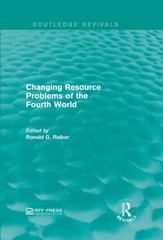Question
In this problem you consider the impact of an increase in thriftiness in the IS-LM model.(If you haven't heard the term before you can describe
In this problem you consider the impact of an increase in thriftiness in the IS-LM model.(If you haven't heard the term before you can describe people who try to avoid spending as thrifty. In other words, people who try to save more are more thrifty.)
The economy is described by the following equations:
C(Y - T) = a + 0.75(Y - T)
I(r) = 10 - r
T = 10, G = 20
The LM curve is very simple, r = 4, as you can verify from the fact thatand L = 12-r.
i. What does the LM curve look like visually on the standard IS-LM graph? Briefly explain.
ii. Calculate the changes in output and saving if consumers become more thrifty, represented by a 1 unit drop in autonomous consumption, a. This is called theparadox of thrift.
iii. Briefly explain why the result in (c) is a paradox.
iv. Does the paradox also arise in the neoclassical model? (You can assume the C and I functions in the neoclassical model are the same as here.)
Step by Step Solution
There are 3 Steps involved in it
Step: 1

Get Instant Access to Expert-Tailored Solutions
See step-by-step solutions with expert insights and AI powered tools for academic success
Step: 2

Step: 3

Ace Your Homework with AI
Get the answers you need in no time with our AI-driven, step-by-step assistance
Get Started


